I am sure most of us saw or owned a phone before the smartphone era when the devices were thicker and a lot less compact, suitable mainly for calling and rarely for occasional basic gaming, but tough enough to handle a few drops to the ground.
Then came the touchscreen phones (which were still tough enough) and later the smartphones took over the world, now with larger screens, smaller width, higher specs and, as expected, a higher price tag. This made choosing the best rugged phone a lot harder, since the smartphones came with a major disadvantage: if before, dropping your phone wasn’t the cause of great stress, smartphones are not as drop resistant as their predecessors.
UPDATE: The Unihertz Tank2 has been added to the best rugged smartphones list.
TOUGHEST SMARTPHONES FOR INDUSTRIAL AND CONSTRUCTION WORKERS
TOUGHEST SMARTPHONES FOR PEOPLE THAT PRACTICE OUTDOOR SPORTS
Some screens won’t survive from falls even below 3 feet and there are stories on the web that some phones screens shattered simply by being carried inside the pocket (some previous models from Apple). So, for the people that don’t want to treat their cell phones like jewelry and don’t want to spend hundreds of dollars on a device that can shatter at any time, I have compiled a list of the best rugged smartphones that, although not indestructible (no phone can ever claim that), are as close as one can get to the perfect drop proof, shockproof and waterproof smartphone.
But, before that, you need to understand that the rugged smartphones are not really a homogeneous group and that, in reality, they are divided in a manner to be suitable for two main audiences: the ones that work in an industrial environment or in constructions and need a fully rugged, durable and no-compromises phone (where the internal specs are not a high priority) and the ones that need a mid-to-high-end smartphone which will survive the occasional fall (even face first) and that can handle splashes or even full submerges underwater (usually, active people who regularly practice different types of outdoor sports).
1. CAT S62 PRO
The Cat S62 Pro continues the legacy left by the S61 and the S60, both very popular rugged smartphones, suitable for construction workers, being able to withstand even the harshest environments, while maintaining the elegant look of modern smartphones. One of the main selling points of the series was the thermal imaging camera and, while, the CAT S61 wasn’t a radical change from its predecessor, the CAT S62 Pro has made some significant improvements in this department.
Indeed, the thermal camera has a far better sensor (FLIR Lepton 3.5 instead of the Lepton 2.5 of its predecessor), there are four more thermal pixels (therefore a sharper image) and there is now a new MyFLIR PRO app with additional features. But, while it has gained on one end, it has lost on another since the manufacturer decided to remove the indoor air quality sensor, as well as the laser-assisted distance measurement. The internal hardware has also been improved (although nothing too radical) and there is now a better camera – this is important considering that unlike the Panasonic Thoughpad series which focuses exclusively towards the industrial aspect, the CAT smartphones have always also catered to the consumer market.
The Cat S62 Pro doesn’t look as refined as some flagship smartphones, but it still went quite far away from that rugged look (that some Chinese brands are still sporting, such as Blackview), so expect a full glass front, a metallic frame and a plastic rear panel. The case has maintained those rounded corners from the previous models (minus the top CAT logo) and it’s also fairly larger than its predecessor, measuring 6.24 x 3.02 x 0.47 inches – what’s interesting is that it’s also lighter, weighing 8.75 ounces.
The back of the phone is covered by a rubber finish which, similarly to its predecessor can’t be removed to give you access to the battery and, to access the microSD and SIM card slots, you need to remove the tray located on the left side of the device. The buttons from the edges are big, firm and easy to press (there is also Programmable key that, when pressed, can be configured to send your location to a list of predefined contacts and, on the bottom, there’s a USB port, while on the top, there’s the audio jack, both protected by small covers).
The Cat S62 Pro is built to be able to withstand a lot of punishment. The manufacturer says that the device is drop proof, so it can endure drops from 6 feet onto concrete thanks to its reinforced die cast frame (it was dropped on every side and corner) and the smartphone is also MIL Spec 810H rated, which means that the CAT S62 Pro was tested against drops, vibration, wind, rain, sand, salt mist, extreme temperature (between -13 and 131 degrees F), high altitude, as well as humidity and it survived. Also, on the front, the edge slightly protrudes creating a bit of a lip around the display, so, along with the Corning Gorilla Glass 6 protection, it should ensure that the screen won’t shatter if dropped face-first.
The Cat S62 Pro is also IP68 and IP69 rated, which suggests that it could be submerged under water down to 10 feet for 60 minutes, but the tests show that the device will only survive for 35 minutes and only down to 5 feet. One thing that’s missing is the physical buttons, which, from my point of view are still very much a necessity in a harsh environment, since you won’t always be able to use the screen. Yes, there is a Glove mode, but nothing beats the good ol’ physical buttons.
Besides the fact that it is a tough smartphone, the appeal of the S62 Pro remains the built-in thermal imaging camera and, considering that the rugged phone has an improved sensor, the thermal camera will capture better images. To be more specific, the Lepton 3.5 sensor has four times the thermal pixels than its predecessor (160x120p) and the output is at 1440 x 1080 pixels. Additionally, the camera can now detect heat sources from up to 10 feet away and the temperature range is between -4 and 752 degrees F (the same as its predecessor). The multiple modes (filters) are still there and they can measure the temperature of multiple spots, retroactively pinpoint a temperature in the image and they can even ‘see’ in environments where there is lots of smoke.
We already talked a bit about the front of the phone, but you need to know that the S62 Pro features a 5.7-inch IPS LCD capacitive touchscreen display, with a resolution of 2160 x 1080 pixels, a pixel density of 424ppi and 18:9 aspect ratio (it finally jumped on the wide screen bandwagon). The resolution is more than enough for a screen of this size and the viewing angles are solid. Also, the black levels aren’t really that deep (no way close to the AMOLEDs), but the images are equally sharp as on its predecessor (and that’s a good thing since it was already a decent display).
On the inside, the S62 Pro comes equipped with an octa-core Qualcomm SDM660 Snapdragon 660 chipset (quad-core 2.2GHz Kyro 260 Gold CPU and quad-core 1.8GHz Kyro 260 Silver) which is an improvement over the Snapdragon 630 chip of the CAT S61, but still not the most inspired decision since this chip is not that energy efficient and doesn’t really provide that much power over its predecessor (at least a SD712 would have been better). There are also 6 GB of RAM (two more GB from the previous generation), an Adreno 512 GPU (instead of the Adreno 508 of the S61) and 128GB of storage memory (don’t forget that you can also add up to 256GB using the microSD slot). The S62 Pro runs on Android 10 and there is a planned upgrade to the Android 11 (a firmware upgrade on a rugged smartphone? that’s new). The software is almost stock version that will definitely appease most users as it doesn’t annoy with additional useless apps (that sometimes are uninstallable).
On the rear side of the phone, there’s a 16-megapixel camera with dual-LED dual-tone flash and the FLIR thermal camera (which we already talked about). On the front, you can find the same 12-megapixel secondary camera. The problem with the main camera is that even if it shoots decent photos most of the time, it just isn’t on par with other similarly priced phone cameras: it shoots noisy photos if the room isn’t bright enough and in low-light or during the night, the performance doesn’t get any better (something which, unfortunately, has become to be expected from a rugged phone).
Furthermore, the Cat S62 Pro is equipped with a non-removable 4,000mAh battery (no wireless charging available) and this is another unfortunate decision that the manufacturer has made since the CAT S61 has a 4,500mAh battery. Taking into consideration that the SoC on the S62 PRO is not that power efficient, expect about one day and a half with some light and medium use; to get from 0 to 100 % using the provided charger, it will take about 2 hours.
Verdict: The S62 Pro is equipped a lot better than most other smartphones in this list, it has lots of features and it also looks a lot better than some industrial-focused handsets (still not near the flagships, but still modern enough for a rugged phone). In terms of ruggedness, the S62 Pro excels in every aspect, it is waterproof, dustproof and can handle lots of drops and, additionally, you also get the awesome thermal imaging camera (which hgas now gotten even better). This means that it takes the first place in our list.
2. Sonim XP10 Rugged Smartphone
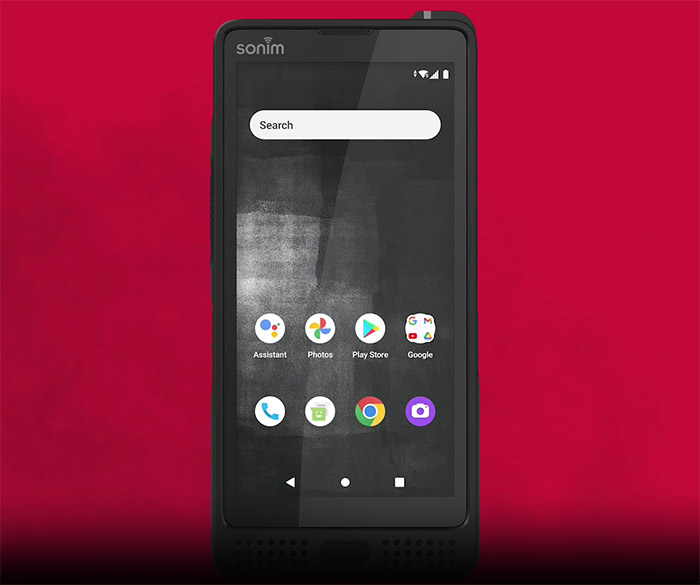
Sonim seems to have gotten more serious about its rugged smartphones line and it recently made available a successor to the Sonim XP8 (which replaced the widely popular Sonim XP7). And it seems that the rugged exterior remains one of the device’s forte, but has Sonim also improved some of its core elements to make it more suitable for 2023? The rugged smartphone is guilty of putting everything in the tough department, while focusing a lot less on the screen and the inner components.
And it seems that despite what the price tag may suggest, the Sonim XP10 is not on par with the premium flagship smartphone on the market. Then again, the Sonim XP10 is not aiming to charm the general public, but it focuses towards a very specific niche audience which includes construction workers, electricians, the people that work at chemical plants and especially it is aimed at those that are the first responders while working in hazardous and emergency-type conditions.
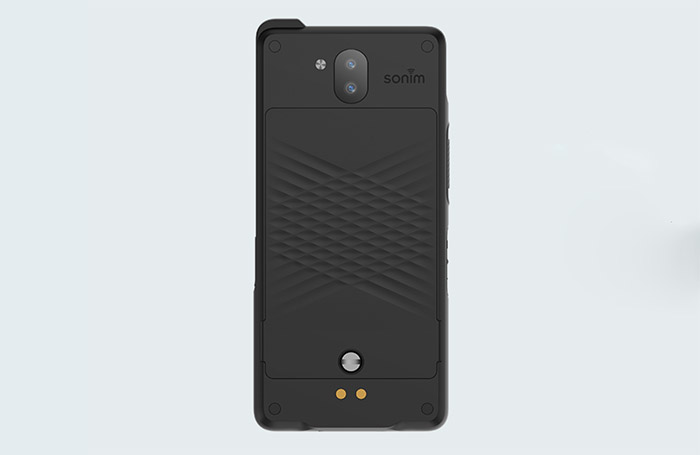
This is enhanced by the FirstNet certifications, including Rapid Response, MCPTT QoS and Ready for Public Safety. The main idea behind the FirstNest suite of feature is to give the first responders access to a congestion-free broadband LTE network, ensuring that more lives can be saved). Furthermore, Sonim has also kept the Push-To-Talk function (the AT&T proprietary EPTT), which can prove to be a reliable tool in case of emergency or when the user needs a walkie-talkie-type of service (such as while hiking).
I couldn’t really see the Sonim XP7 or even the XP8 as elegant phones, but the point was for them to be designed in a manner to ensure that the device will be waterproof, it will survive falling on all kind of surfaces and that it can be used in dangerous environments. The Sonim XP10 follows the same footsteps, but there are some notable design-wise changes. The top protrusion for the antenna has gotten even smaller, now being a mere bump and the smartphone is also a bit thinner than the XP8, measuring 6.3 x 3.0 x 0.64 inches. And yes, it is a much larger phone overall.
Should a rugged smartphone be that large? Sonim and AGM say yes, while CAT says no. In any case, there are other elements that sets this rugged smartphone further apart from the regular Android handsets.
The ‘analogue’ front-facing buttons of the previous gen are gone, now being replaced by in-screen keys, but there is a SecureAudio connector (for any external speakers) on the side and a PTT button and the Emergency key (when pressed, it automatically sends the GPS location and the user should immediately be contacted by the emergency center).
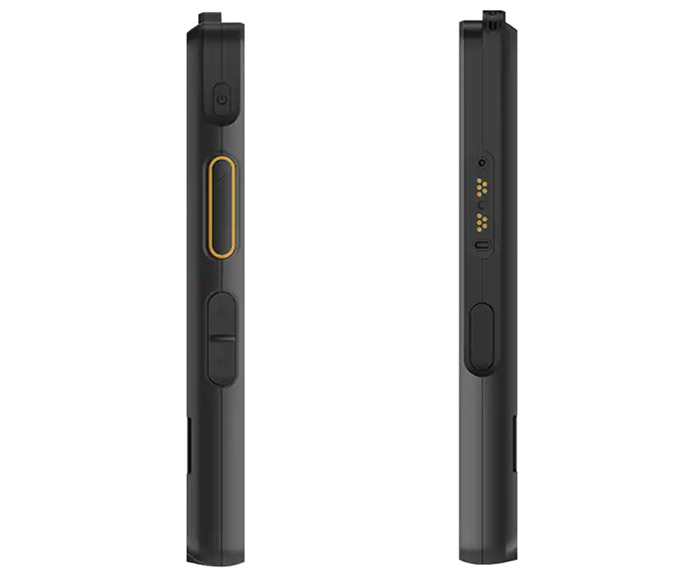
Some other features that were the norm for a long time and are now turning to be something quite exotic are the removable battery and the microSD card, but Sonim is also guilty of removing the 3.5mm headphone jack (it was missing on the XP8 as well). The last curious addition is the two loud speakers that sit below the display with the fingerprint reader in between them.
Covering most of the front side, there’s the 5.5-inches IPS display with a resolution of 2,160 x 1080 pixels and 439ppi pixel density. The refresh rate remains 60Hz and, to get an idea about what to expect from a rugged smartphone in 2023, know that both the AGM G2 Guardian and the CAT S75 have 120Hz panels.
And don’t get me wrong, the Sonim XP10 is not a cheap smartphone by any means. Obviously, the display will do fine for normal media consumption, but, as expected, the colors don’t pop out as much as on an AMOLED display. Covering the screen and protecting the entire front side (expect for the buttons), there’s the Corning Gorilla Glass Victus which will do a good job protecting against scratches and, considering that the display may be vulnerable if the users drops the phone face-first, Sonim decided to surround the screen with a raised, protective lip.
The two aforementioned 100 dB+ speakers are very loud and surprisingly clear – the mics use Goodix Noise and Echo cancellation for a better call quality. I need to mention that you can still operate the rugged smartphone even if you have wet fingers or gloves.
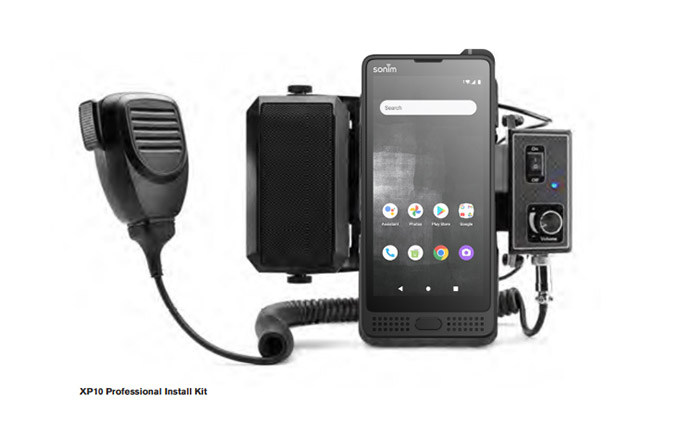
The Sonim XP8 was able to withstand a lot of abuse and the XP10 didn’t lower the bar. The handset is IP68 and IPX9K rated, which means that it’s as close to being truly waterproof as possible; it can also survive corrosive chemicals and oils, extreme pressure and can withstand a lot of falls before taking actual damage (it’s MIL-STD-810H rated). So, similarly to its predecessors, the phone is not completely indestructible but it is one tough piece of work (probably one of the most durable smartphone available right next to the Panasonic rugged handsets).
Inside the case, the Sonim XP10 is equipped with a Qualcomm Snapdragon SM4350 Pro SoC (six-core Cortex-A55 clocked at 1.9GHz and dual-core Cortex-A76 clocked at 2.2GHz), 6GB of RAM, an Adreno 619 GPU and 128 GB of storage memory (you can add up to 1TB using the microSD card slot). As you can see, Sonim has made significant progress in the hardware performance department as well (the XP8 had 4GB of RAM, and a Snapdragon 630 chip), so the phone will feel more responsive, it will allow some light gaming and the multitasking will be handled better.
It’s still an entry-level chip which will raise some eyebrows considering the price tag of the rugged smartphone. The Sonim XP10 comes with Android 12 and it seems that the manufacturer has promised to upgrade the phone to Android 13 in the near future. Know that the rugged smartphones usually are stuck with the Android version with which they were released.
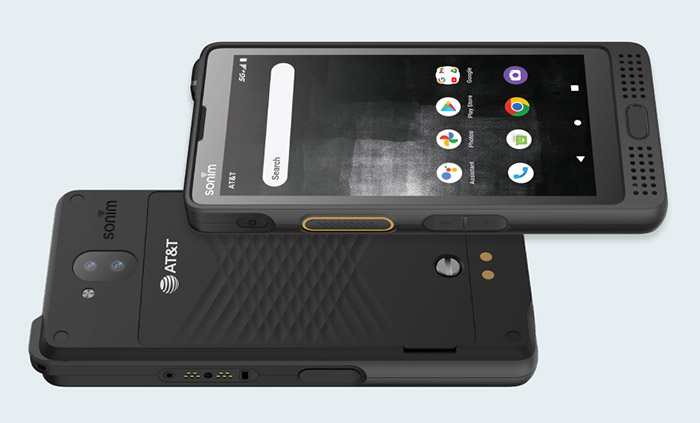
Moving on to the cameras, we can see that the Sonim XP10 sports a 50-megapixel main rear camera (can’t wait for the 1K+-megapixel cameras on the future phones) and an 8-megapixel wide-angle lens cameras. On the front, there is another 8-megapixel camera suitable for selfies. Just like almost all other rugged smartphones, the rear camera performs decent at best in good light but under-performs in low-light, but, let’s be honest, you won’t use the Sonim XP10 as your main shooter anyway.
Now let’s have a look at the battery. The XP8 had a quite impressive 4800mAh battery that could deliver up to 48 hours of normal usage and the Sonim XP10 aims to top that with its equally impressive 5000 mAh removable battery which, similarly to its predecessor, it will take about two full days of medium to high use until you’ll need to recharge the battery. One last appealing ‘feature’ is the three year warranty. Just like the XP7 and the XP8, the Sonim XP10 will be replaced if it breaks, without questions asked.
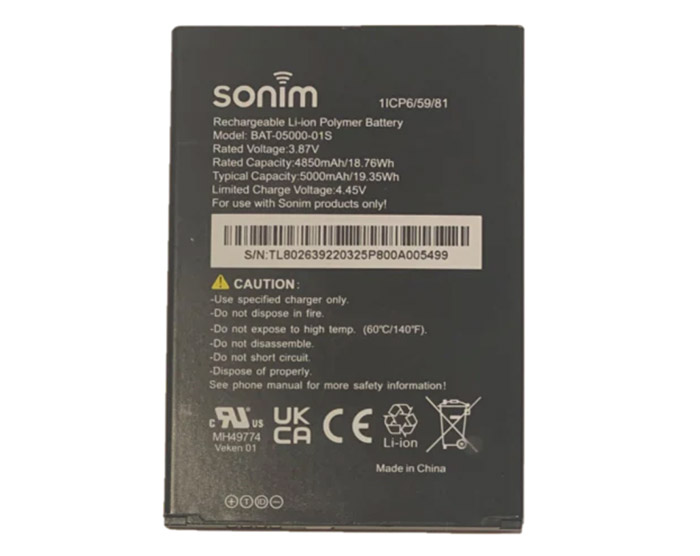
Verdict: The Sonim XP10 does feel like it is indestructible and, even if it made significant improvements in both looks and performance, it still isn’t entirely suitable for the wider audience (and I’m not sure that it tries to). That being said, the Sonim XP10 is definitely one of the most rugged smartphones available in 2023 and its mid-range performance will be enough for most of its users, while it will also be a great addition to not only workers in tough environments, but for people that practice outdoor sports as well.
3. AGM G2 Guardian Rugged Smartphone
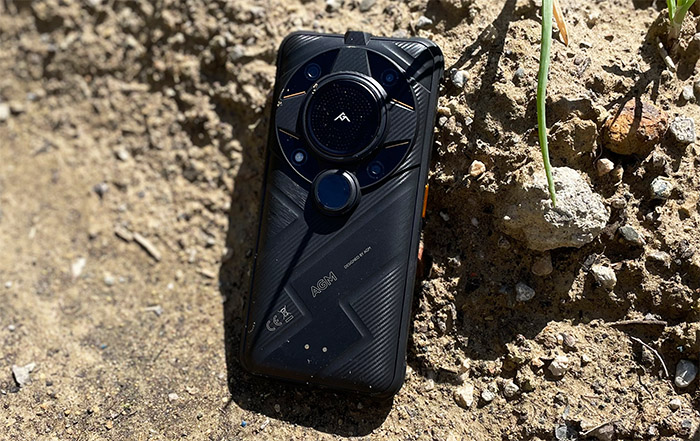
Read the full review of AGM G2 Guardian
The AGM G2 Guardian is one of the most ambitious rugged smartphones that the manufacturer has developed so far, surpassing the previous flagship Glory Pro 5G not by making some hardware improvements, but by adding a thermal monocular for long-range detection. And yes, AGM G2 Guardian is the first rugged smartphone to go this route. Of course, it does have some very niche applications, being suitable mostly for outdoor use (such as when camping or hunting).
Design-wise, the AGM G2 Guardian is not a device that you’re going to mistake for a mainstream flagship smartphone, despite carrying a hefty price tag. It’s not that we don’t get a fairly clean look, with only the display being surrounded by a surprisingly thin bezel, for a rugged smartphone. But the solid rubber frame that goes around the smartphone is fairly intrusive, having a slight bump at the four corners to ensure that the smartphone will survive if dropped at that angle (as it usually happens).
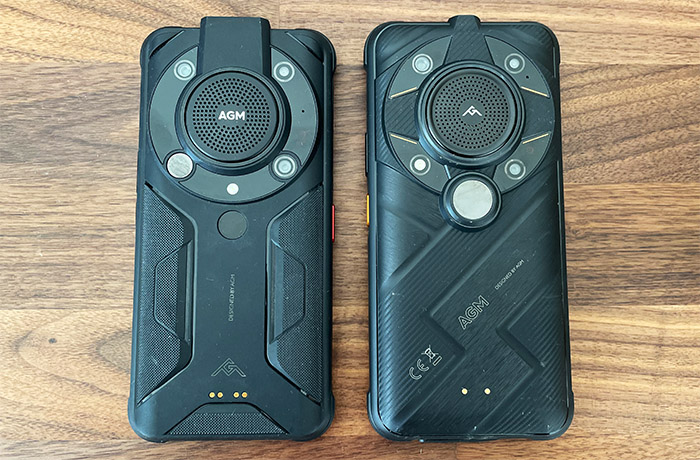
If you turn the AGM G2 Guardian on the other side, you’re going to see that the complicated look of the Glory Pro has been ported here as well, although with some slight changes. We still get a large circular area where the manufacturer positioned the cameras and in the middle, there is a protrusion to embed the large speaker. It’s the same speaker as on the Glory Pro which can go up to 110dB, but, in my tests it didn’t offer a very clear sound (as I would have liked). Still, it is undoubtedly a very loud speaker, if only it would have been positioned a bit differently (like on the front..).
Above the speaker, the rugged smartphones has a small guide which reaches the top-placed powerful flashlight (you can also use the flash from the camera as a secondary light source). The fingerprint reader has been moved to the side and it’s far more accurate than on the Glory Pro, while its place from the rear has been taken by the thermal monocular camera. There’s wireless charging coil is still present and it’s a kind of rarity with rugged smartphones, albeit a bit awkward to place it on a wireless charger.
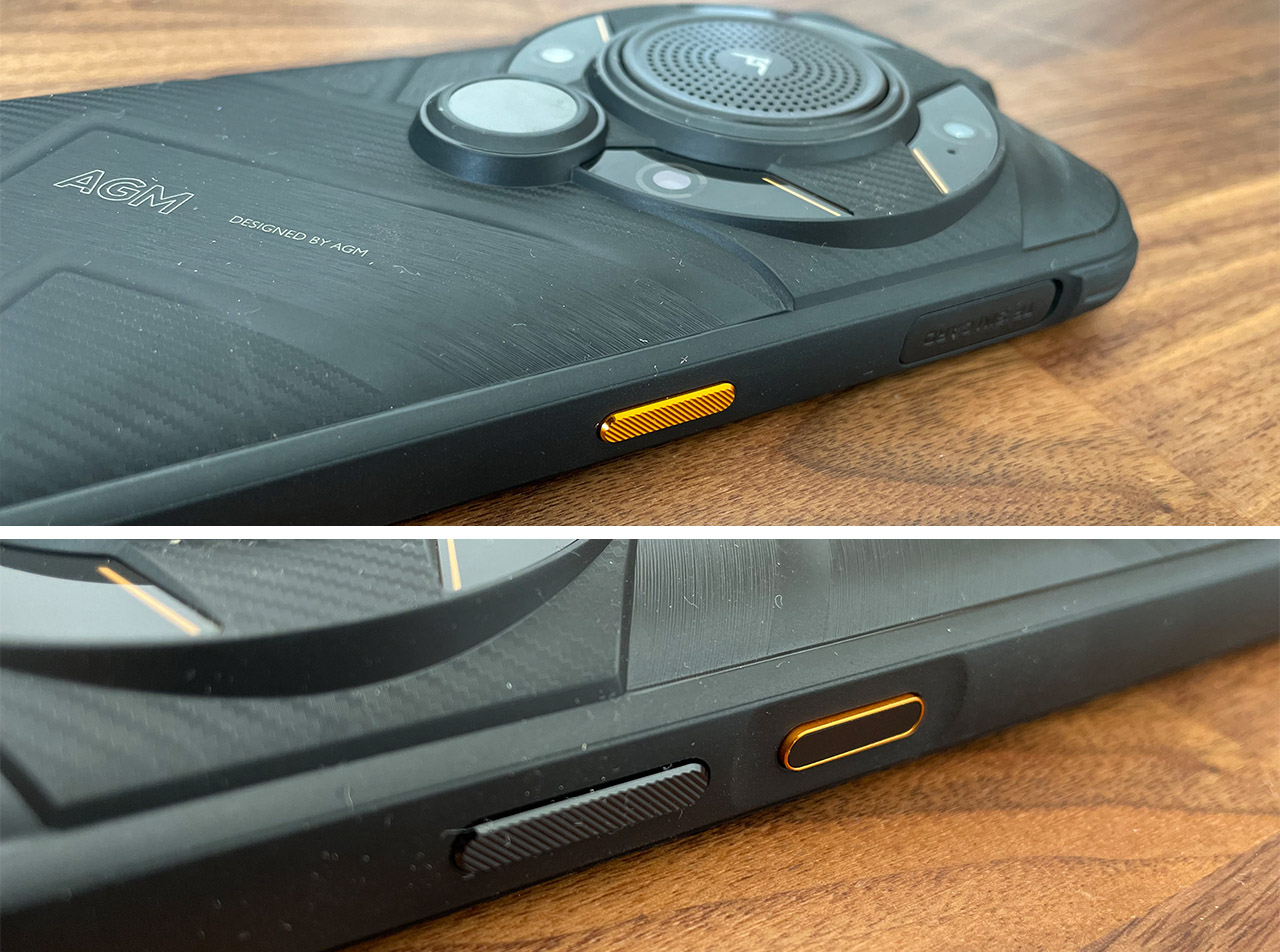
On the frame of the AGM G2 Guardian, there is a programmable button that can have the Push-to-Talk function for simulating walkie-talkie communication or for sending an SOS alert. There’s also the usual volume rocker, the Power button and the not so usual now 3.5mm jack along with an USB-C charging port (the last two being covered). There is also a microSD card slot that supports up to 512GB. In terms of ruggedness, the AGM G2 Guardian does seem to check most boxes. There is the IP68 and IP69K rating which means that besides the complete protection from dust, the smartphone is also pretty much waterproof. And yes, you can put it underwater down to 20 feet for 30 minutes.
Additionally, there’s the MIL-STD-810H certification and the tests that were revealed by AGM are the protection against drops from 5 feet, high temperature spray-downs and the ability to remain operational when the temperature goes as low as -14 degrees F to 140 degrees F. The Arctic Battery from is unfortunately gone which I admit, had limited applications, but was a very cool feature.
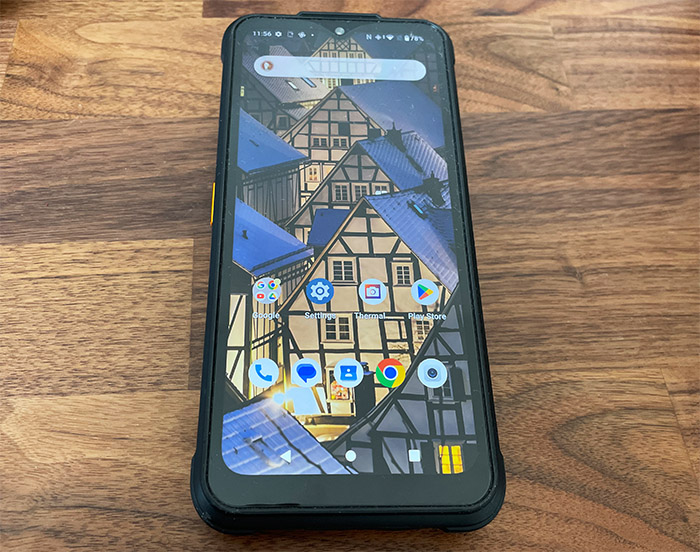
Besides these protective features, there is also the lip that surrounds the display and, while it works, I would have liked it to be higher in order to be even more effective. And I don’t know why there is no Gorilla Glass protection on a rugged smartphone that costs quite a bit of money. That’s redeemed by the use of monocular lens. There are three cameras on the back of the rugged smartphone, one is the 108-megapixel main shooter which works well along with the 2-megapixel macro camera. Then there’s the night vision camera that uses 2 infrared LEDs and the last is the monocular thermal camera which works very differently to what we’ve seen on the CAT S62 Pro and on .
It doesn’t do that great on close-by areas, but it performs incredibly well on distant subjects. I have done a very detailed analysis on how the camera performs on the full review, but know that I could see silhouettes as far as 400 feet and some moving dots at about 650 feet. So it does work as intended – it’s also quite fast and doesn’t lag. That’s mostly due to the internal hardware.
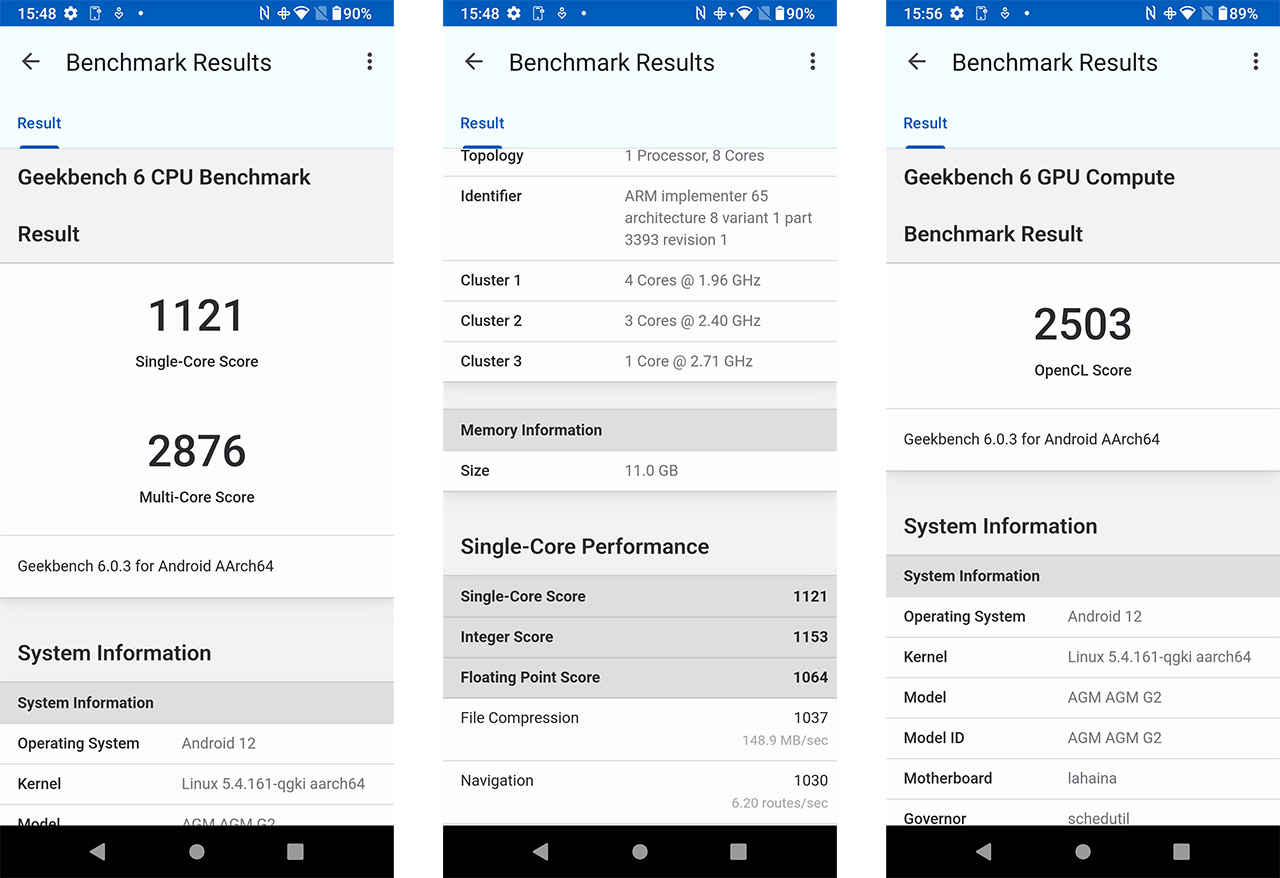
Don’t expect it to be flagship-level, because it is actually built as a veritable mid-range. There’s an octa-core Qualcomm Snapdragon QCM6490 SoC (clocked at 2.7GHz), an Adreno 643 GPU, 8GB/12GB of RAM and 256GB of flash storage. I ran some benchmarks in the full review and the performance is somewhere in the mid-range realm, but I have also ran some actual games which showed a different story. Besides some occasional dropped frames, everything was smooth and stable, even the more demanding titles.
The display is 1080p (2408 x 1080 pixels to be exact) and it’s a large 6.58-inch LTPS TFT panel which gets quite bright, so it’s going to be fine outdoors, in the sun. Also know that the display has a refresh rate of 120Hz. The AGM G2 Guardian rugged smartphone is equipped with a 7000mAh non-removable battery which delivered about 3 days on normal use with the brightness set to 60%, which is a fairly good performance.
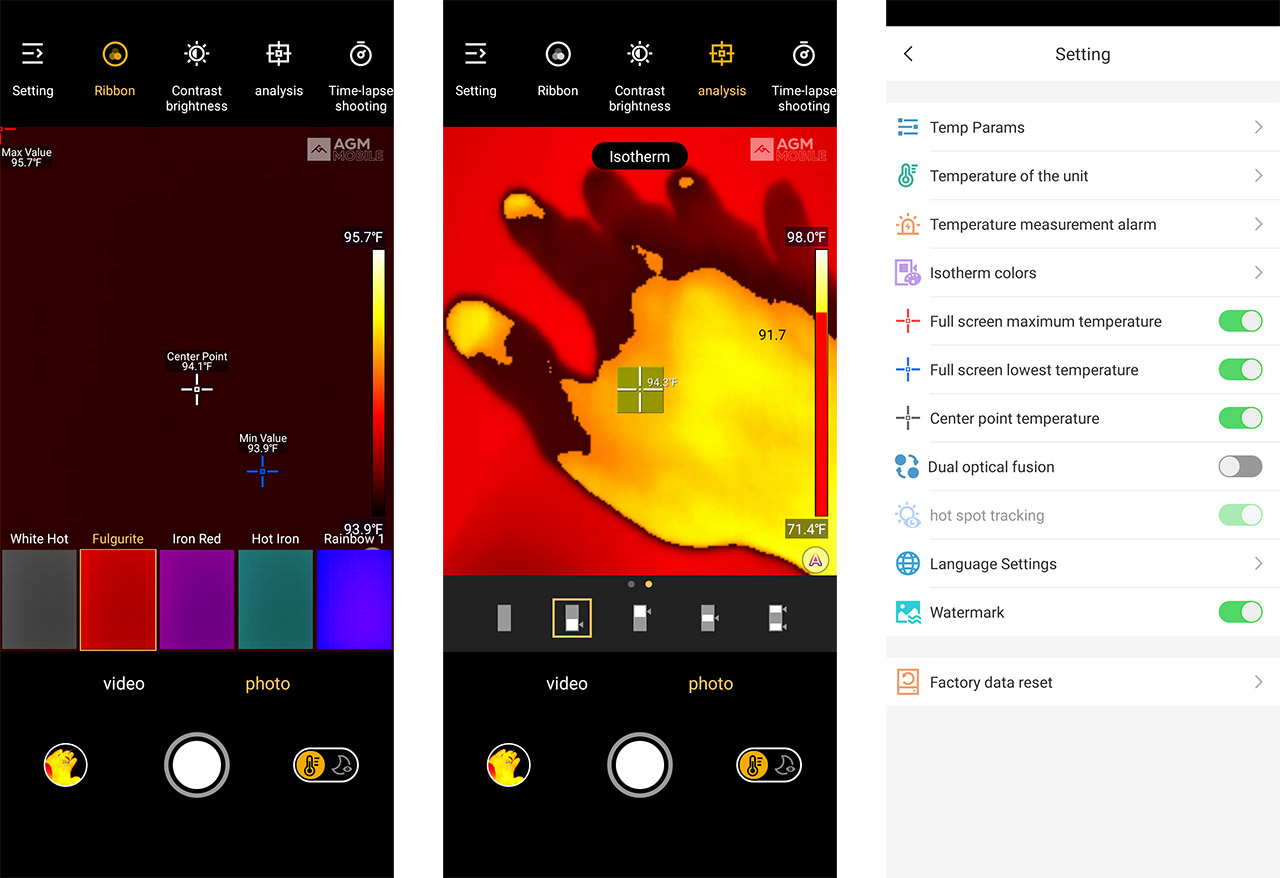
The rugged smartphone does come with Android 12 which is very stock-like and, unfortunately, the users will be stuck with this version for the entire time since AGM does not upgrade their rugged smartphones to a newer Android version. Also, be aware that the warranty is limited to 1 year and you should always check the type of support you will receive in your area.
Verdict: The AGM G2 Guardian is definitely a better smartphone than its predecessors in terms of ruggedness and overall performance. Sure enough, it is a mid-range smartphone on the inside, but the exterior is what will make the difference when you’re working in an industrial environment. AGM has added as many elements that it could in order to persuade users away from other brands, which includes the monocular thermal camera, the loud speaker, the black and white night vision, the wireless charging and the powerful flash light. If it wasn’t for the software and hardware support, this would have been the perfect rugged smartphone, but it’s still fairly attractive in its current form as well.
4. AGM Glory Pro 5G Rugged Smartphone
Read the full review of AGM Glory Pro
AGM has been building rugged smartphones for a bit over half a decade and what stood out the most for these devices was the attempt to retain a design that’s as close as possible to the regular smartphones. Things changed over the last couple of years and now CAT, Samsung and Kyocera are building decently looking smartphones, while also keeping that necessary ruggedness intact. In a strange turn of events, AGM completely deviated from its initial philosophy and the latest AGM Glory Pro is not a device that you’re going to mistake for a mainstream flagship smartphone, despite carrying a hefty price tag. There are no annoying logos on the front (as Blackview did a few generations ago), so we do get a fairly clean look, with only the display that’s surrounded by a surprisingly thin bezel, for a rugged smartphone.
The solid rubber frame that goes around the smartphone is also not that intrusive, having only a slight deviation at the corners to ensure that the smartphone will survive if dropped at that angle (as it usually happens). If you turn the AGM Glory Pro on the other side, it’s a completely different story, because we get a large circular area where the manufacturer positioned the cameras (which kind of looks like the design of the Leica phone) and in the middle, there is a protrusion to embed a large speaker. And this has been one of the main selling points because it can reach up to 110dB which is very loud, but, in my tests it didn’t offer a clear sound (as I would have liked). Still, it is undoubtedly a very loud speaker, if only it would have been positioned a bit differently (like on the front..). From the speaker, there is a piece of plastic that goes to the top of the rugged smartphone and it ends with two powerful lights.
Additionally, on the rear panel, there are various protective areas, as well as a fingerprint reader that is very inaccurate if you move the finger at a slight angle and then there’s wireless charging. I think this is an important element that AGM has added because I have rarely seen it on other rugged smartphone and it works quite well, reaching up to 15W (as seen on my test with the Vebach 30W wireless charger).
On the frame of the AGM Glory Pro (which apparently is made of 10% weaved-in fiberglass), there is a multi-function red button that does not support SOS functions, but it does have the Push-to-Talk option built-in for simulating walkie-talkie communication.
There’s also the usual volume rocker, the Power button and the not so usual now 3.5mm jack along with an USB-C charging port (the last two being covered). There is also a microSD card slot that supports up to 512GB. In terms of ruggedness, the AGM Glory Pro does check most boxes. There is the IP68 and IP69K rating which means that besides the complete protection from dust, the smartphone is also pretty much waterproof. And yes, you can put it underwater down to 5 feet for 30 minutes. Additionally, there’s the MIL-STD-810H certification and the tests that were revealed by AGM are the protection against drops on concrete, high temperature spray-downs and the ability to remain operational when the temperature goes as low as -4 degrees F to 60 degrees F. There is more because thanks to what AGM calls the Arctic Battery, the rugged phone can keep going at -40 degrees F for an hour.
I didn’t have the means to test it at that temperature, but I did put the smartphone in the freezer at -10 degrees F and the battery went from 94% to 90% over the span of ten hours. Besides these protective features, there is also the lip that surrounds the display and, while it works, I would have liked it to be higher in order to be even more effective. And I don’t know why there is no Gorilla Glass protection on a rugged smartphone that costs quite a bit of money. That’s redeemed by the use of a thermal camera. Indeed, there are four cameras on the back of the rugged smartphone, one is the 48-megapixel main shooter which works well along with the 2-megapixel macro camera.
Then there’s the 20-megapixel night vision camera that uses 2 infrared LEDs and the last is the thermal camera which works similarly to what we’ve seen on the CAT S62 Pro. Despite having a better resolution, it’s not that great with the image processing, but still, it shows the temperature, it can see probably more than 20 feet ahead, so it does work as intended. It’s also quite fast and doesn’t lag as much as I have seen on other smartphones. That’s mostly due to the internal hardware.
Don’t expect it to be flagship-level, because it is actually built as a veritable mid-range. There’s a Qualcomm Snapdragon 480 5G SoC, an Adreno 619 GPU, 8GB of RAM and 256GB of flash storage. I ran some benchmarks in the full review and the performance is somewhere in the lower-end mid-range realm, but I have also ran some actual games which showed a different story. Besides some occasional dropped frames, everything was smooth and stable, even the more demanding titles. The display is 1080p (2340 x 1080 pixels to be exact) and it’s a large 6.53-inch LTPS TFT panel which gets quite bright, reaching up to 860 nits. So it’s going to be fine outdoors, in the sun. The AGM Glory Pro is equipped with a 6,200mAh non-removable battery which delivered almost 18 hours of SOT with the brightness set to 50%, so it’s going to easily go past two days on medium use.
The rugged smartphone does come with Android 11 which is very stock-like and, unfortunately, the users will be stuck with this version for the entire time since AGM does not upgrade their rugged smartphones to a newer Android version. Also, be aware that the warranty is limited to 1 year and you should always check the type of support you will receive in your area.
Verdict: The AGM Glory Pro 5G is definitely a better smartphone than its predecessors in terms of ruggedness and overall performance. Sure enough, it is a mid-range smartphone on the inside, but the exterior is what will make the difference when you’re working in an industrial environment. AGM has added as many elements that it could in order to persuade users away from other brands, so we also get a thermal camera, the loud speaker, the black and white night vision, the wireless charging and the powerful dual-LED flash light. If it wasn’t for the software and hardware support, this would have been the perfect rugged smartphone, but it’s still fairly attractive in its current form as well.
5. CAT S48C Rugged Smartphone
Although not really a new device anymore, the CAT S48C is the latest addition to the series of rugged smartphones from Bullitt (with the license from CATerpillar to use their name) and it’s also the first device from the manufacturer to become available in the US stores due to the partnership with Verizon and Sprint. This is not the only mid-range rugged smartphone that the manufacturer has made available, since the CAT S41 remains very relevant even in 2023 and truth be told, besides some slight improvements hardware-wise, the S48C and the S41 aren’t such different devices. Both the aforementioned smartphones seem to favor a ‘return to basics’ approach, where you get a good enough display and a decent software experience, as well as a tough exterior, so, when put next to the flagship CAT S61, there is no thermal imaging or an air quality monitoring, but every other rugged element is definitely there.
From the design point of view, the CAT S48C does not bring anything revolutionary to the table, the smartphone retaining a similar look to the other CAT handsets, featuring a thick rubberized case (retaining the same octagonal shape), covered by a black finish and with narrow longitudinal canals on the rear and the lateral sides which will offer a better grip. Unlike many other rugged smartphones directed towards constructions or industrial workers, the front and the rear of the smartphone are surprisingly clean, lacking those unnecessary screws or additional metal plates that won’t add much in terms of protection, but the sides are a lot more busy due to some white plastic strips and the buttons. The front side of the CAT S48C maintains a minimalist tone until it gets interrupted by the three physical buttons, Back, Home and Recent Apps which are very useful in an oily environments.
Furthermore, on the top side, just like the CAT S41, the CAT S48C has a 3.5mm headphone jack and a microphone, while on the left side, there’s a Power button and a gold Programmable key (can be configured to launch the camera, the torch or for enabling the Push-to-Talk function). On the right side, you can find two buttons dedicated to the Volume control (when pressed along with the power key simultaneously, it will take a screenshot and, when the camera app is on, press either volume up or down to take a photo), as well as two thick covers for the SIM tray and the SD card – on the bottom, there’s a single loudspeaker and the USB port covered by a protective layer of plastic (the manufacturer finally decided to implement the better type-C standard). As can be expected from a rugged smartphones, the CAT S48C is IP68 certified, which means that it is dust-proof and you can submerge the rugged smart phone underwater down to 5 feet for about 30 minutes (the protective covers are there for a reason, so make sure to seal them tight after you access the slots to ensure that the device will remain resistant to water and dust).
But that’s not all, because, similarly to the Panasonic Toughpad FZ-E1, the CAT S48C carries the Military Standard 810G (MIL-STD-810G), which ensures that the smartphones will survive drops onto concrete from up to 6 feet, even if the phone will fall face-first, due to the protruded outer lip all around the front side that should ensure that the screen survives unscathed – I would still be very careful not to hit the screen on sharp objects since in that case, it will shatter. The rugged smartphone can also handle thermal shocks and salt mist spray, as well as vibration and pressure (which does make it a reliable companion in an industrial environment). There are some additional features which add both to the ruggedness and to the comfortability factor: the case has a really good grip and it doesn’t feel like it will slip out of your hand at any time (it measures 5.9 x 3.0 x 0.5 inches, so it’s pretty much identical to the CAT S41 – it also weighs 9.1 ounces).
The CAT S48C has implemented the wet finger/glove-on technology, which, along with the physical buttons, ensures that the phone is operable no matter the conditions. The CAT S41 was lacking the fingerprint sensor and it seems like the CAT S48C is also deprived of this now banal feature (and the CAT S48C is not a cheap device by any means). Besides the size, the display is another element that is shared with the CAT S41, so, we’re dealing with a 5 inch TFT display with a resolution of 1080 x 1920 pixels, the pixel density is (approximately) 441 ppi, it has a 16:9 aspect ratio and the screen is protected by the Corning Gorilla Glass 5, which should provide a reliable protection against scratches (but nothing more). The display is quite colorful, with balanced black and white levels, but, while it is very bright, it is also very reflective (so, in certain conditions, it may be hard to see what’s going on on the screen).
Inside the case, the CAT S48C is very different from the S41, being equipped with a Qualcomm Snapdragon 630 (quad-core ARM Cortex-A53 CPU clocked at 2.2GHz and quad-core ARM Cortex-A53 CPU clocked at 1.8GHz), an Adreno 508 GPU, 4GB of RAM and 32GB of storage memory (which is the only available option, but you do get the possibility to add up to 256GB using the microSD card slot). The Snapdragon 630 is a decent mid-range chip which means that the phone will handle multitasking well (the 4GB of RAM will have a say into this matter), the apps do open immediately and the multimedia experience is satisfactory, but it will perform as a mid-ranger when it comes to gaming (which means that you should have no problem playing most of the available mobile games). Furthermore, the CAT S48C interface is built on top of the Android 8.1 (Oreo) and it is upgradeable to the version 9.0 – unfortunately, not that many manufacturers bother keeping their rugged smartphones up to date. The software experience should have been pretty similar to other CAT phones, but it’s not: while the CAT S41 has a clean interface, with little to no bloatware, the CAT S48C is filled with carrier-specific apps and no, you can’t uninstall them, these applications can only be disabled.
The rear camera is the same as on the CAT S41, so it’s a 13-megapixel rear camera with LED flash, phase detection autofocus and HDR mode, but on the front, the camera has suffered a downgrade to a 5-megapixel sensor, but it’s still plenty suitable for selfies (both of these cameras can shoot photos underwater). The rear camera does a better job than last year’s S60 camera, so the photos are more colorful and will do a decent job in good lighting, but in low light conditions, the photos will have a high amount of noise and blur. So, the cameras are still the Achilles heel for any CAT phone and their performance is not really on par with what other devices from the same price range can offer. Another area where the CAT S48C is inferior to the S41 is the battery which, instead of the expected 5000 mAh, it’s just a 4000mAh battery (non-removable Li-Ion) that has become a new standard with the flagship, non-rugged smartphones on the market. Still, the S48C can last up to 14 hours of continuous video streaming; as expected, there is no Qi wireless charging support.
Verdict: Once again, Caterpillar has managed to create a reliable rugged smartphone, suitable for both an industrial environment and for active people that don’t want to worry whether their smartphone will survive their outdoors adventures. By stripping away the thermal camera, the manufacturer wanted to widen up the audience for both the CAT S41 and the CAT S31 and the great battery life and the improved ruggedness will likely appeal to the large majority of people, but I feel that the uniqueness factor has been lost and, similarly to the ‘normal’ smartphones, it is of paramount importance to stand out from the crowd in any way possible.
6. Unihertz Tank2 (by 8849) Rugged Smartphone
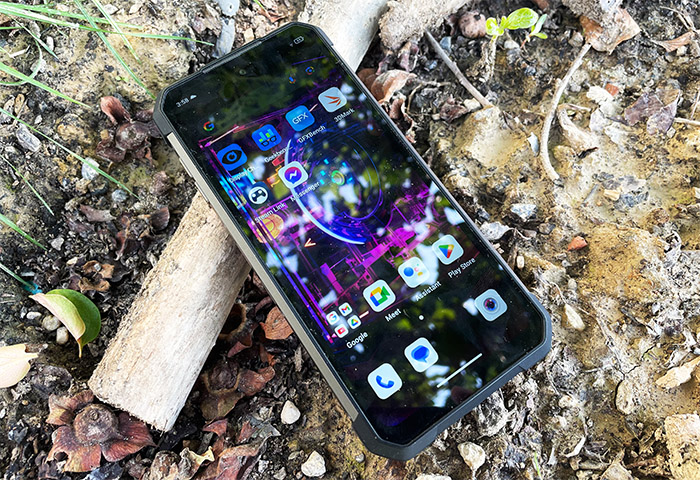
Read the full review of the Unihertz Tank2
The Unihertz Tank2 is an unusual device even by the rugged smartphone standards. I know that when thinking about the toughest phones, most people will point to the Samsung Active series (or some other Chinese brands), but the Unihertz Tank2 is unapologetically huge, it has two powerful 1,200 Lumen flashlights on the rear panel and there is also a full-fledged projector. All of this is possible due to the huge 15,500mAh battery, but we’re not done.
There is also IR control, as well as construction-related features which include a bubble level, plumb blob and a protractor. This means that unlike other rugged smartphones which target a specific niche, the Unihertz Tank2 is suitable for a wider audience, well, as wide as possible within the rugged devices niche. One of the reasons why a lot of people will be taken aback is the size of the device which at 9.4 x 6.9 x 3.3 inches, it’s even larger than the AGM G2 Guardian, so don’t even think about the prospect of fitting it into the pocket.
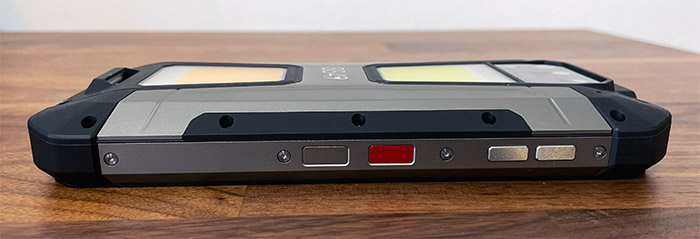
And even if you somehow manage to do so, the rugged smartphone weighs 1.2 pounds, so your trousers will hold on for dear life. The frame of the device is partially made of plastic, with metallic plates on the sides. The fingerprint sensor is positioned on the right side next to the Power switch, the microSD and the two SIM cards. The other side has the volume rocker, the camping light switch and the programmable button.
The battery can be recharged using the USB-C port which is protected from the elements and you can use any cable you want (AGM is more limited in this respect). Now let’s talk a bit more about how rugged the Unihertz Tank2 actually is because the size can be deceiving. We do know that the rugged smartphone has passed some MIL-STD810G tests since it has received the certification, but the manufacturer only mentioned that the device survived high temperature, humidity and mechanical shocks, which is borderline vague.
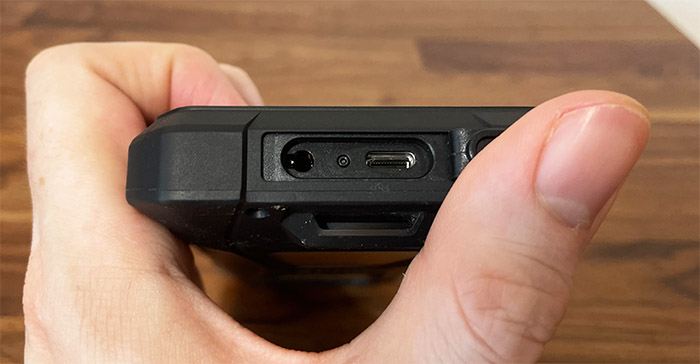
There are also the IP68 and the IP69K ratings which make sure that the smartphone is protected against dust ingress and it is as close to being waterproof as possible. You can swim with it and there is a dedicated camera app for underwater shots. But what usually concerns me is the large display and the Unihertz Tank2 does come with a 6.81 inch screen, but fret not because there is a fairly prominent protective lip around it. And if that’s not enough, we do get Panda MN228 Glass protection, an equivalent for the scratch-proof Gorilla Glass panels.
One other source of concern is the projector. Is is vulnerable to shocks? Not any less than the cameras on the rear panel – it is possible to damage it, so be careful? It’s a shame to use that cool functionality, especially since it’s so useful while camping. And let’s not forget the dual camping lights which are crazy powerful (do not shine them towards your eyes) and there is an SOS pattern to help you get seen during the night.
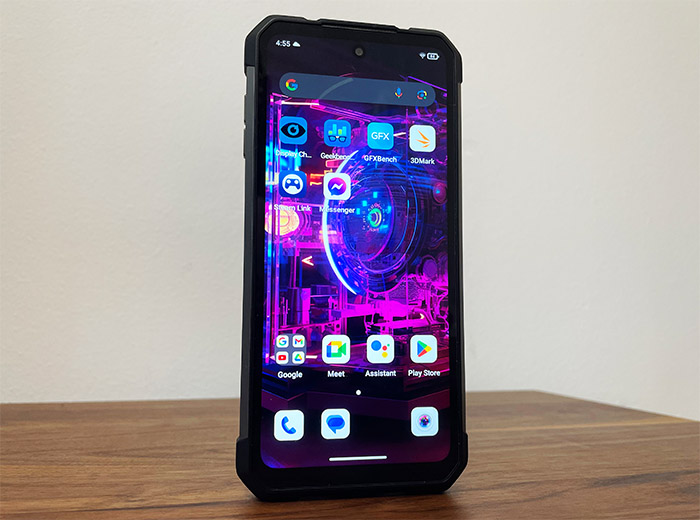
I have already mentioned the large display, but do know that its resolution is 2460x1080p and, despite the advertised support for the 120Hz refresh rate, I could not set it to go above 60Hz. If you do want a 120Hz rugged smartphone, the G2 Guardian remains a solid choice. The display is alright and the colors, even if not perfectly accurate, still look good. As for brightness, you will not have a problem reading text in bright light.
Inside the device, we know that the Unihertz Tank2 went with an ARMv8 processor, 22GB of RAM and the Mali-G57 MC2 GPU. They really didn’t hold back on the RAM and it has payed off because the software experience is very smooth. But what about gaming? I did run various benchmarks, as well as actual games when I tested the rugged smartphone in full, but do know that it’s a veritable mid-ranger.
And nowadays this means that it’s perfectly fine for most types of mobile gaming.
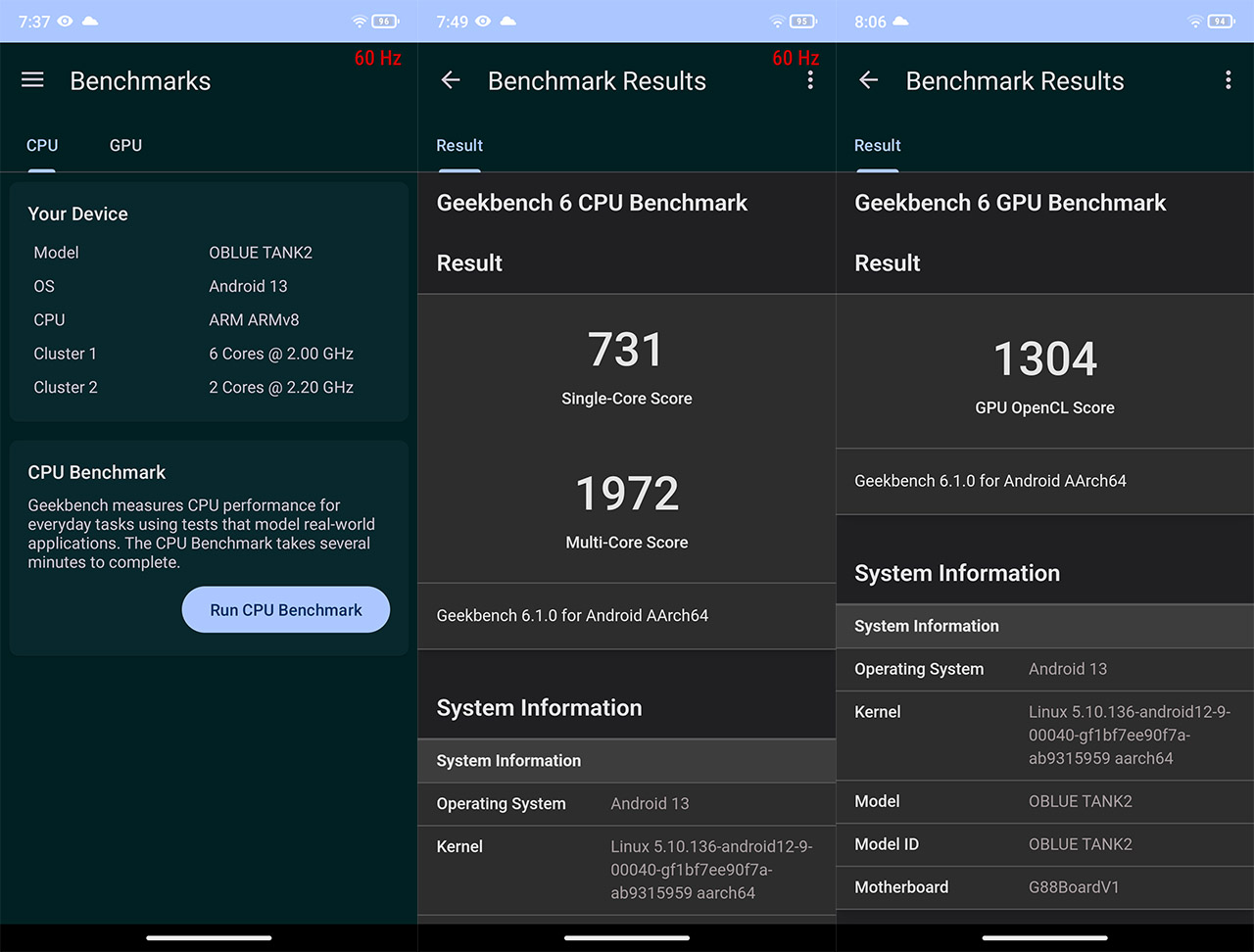
As for the OS, the Unihertz Tank2 comes with Android 13 and, as with other rugged smartphones (despite other claims), it will not see the next Android installment. Still, I did like that there is virtually no bloating, the OS being very close to stock. And yes, there are some apps, such as the Underwater Camera, the IR ZazaRemote and the Toolbox, but they’re actually useful, so not really qualified to be called bloatware.
As for the cameras, the rugged smartphones has a 108-megapixel main shooter, a 16-megapixel wide-angle lens and 64-megapixel night vision camera which is helped by four IR LEDs. None of the cameras are phenomenal, but I suppose they will do the job if you need to capture a photo of a pipe or anything of the sorts.

Lastly, let’s talk about the battery life because at 15.500mAh, it’s got to be special, right? It’s not bad at all since during my tests, I got about 6 days, with the possibility to easily reach a full week. And that’s not something that many smartphones can achieve nowadays. It actually reminds me of the old Nokias.
Verdict: The Unihertz Tank2 is a very unique rugged smartphone, but which manages to capture the attention of many more people than other more consecrated brands. Is it the camping light, the projector or its sheer size that will turn the most heads? Any of these features is a good contender, so overall, the Unihertz Tank2 is perhaps the most fun rugged smartphone that I tested so far.

Mark is a graduate in Computer Science, having gathered valuable experience over the years working in IT as a programmer. Mark is also the main tech writer for MBReviews.com, covering not only his passion, the networking devices, but also other cool electronic gadgets that you may find useful for your every day life.

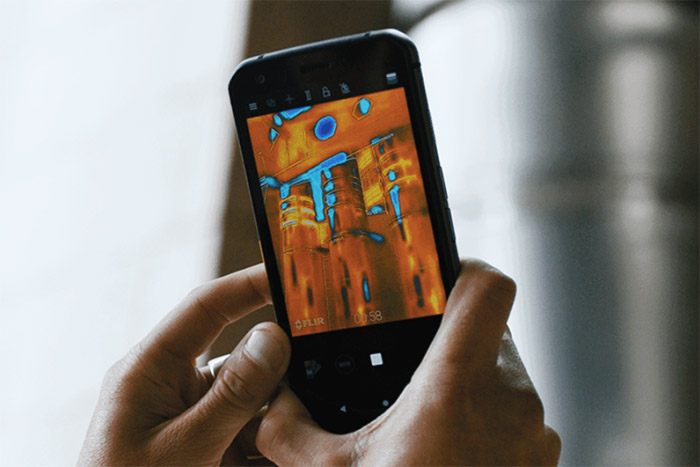
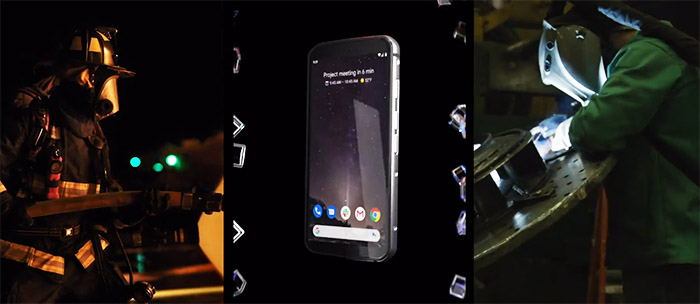
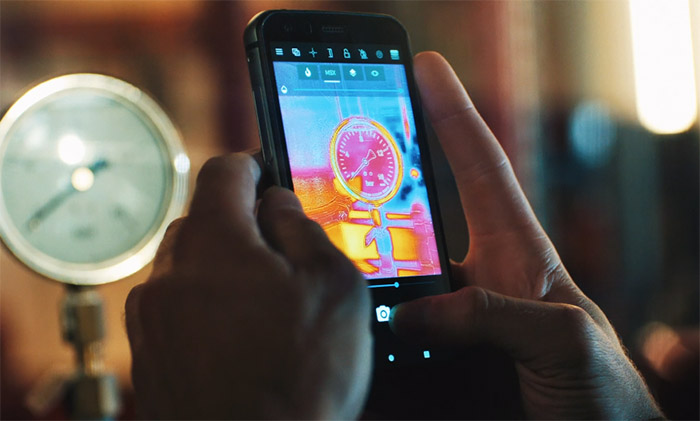
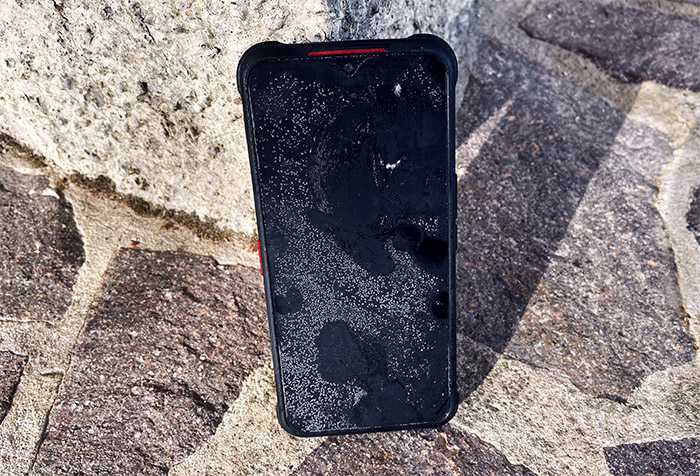

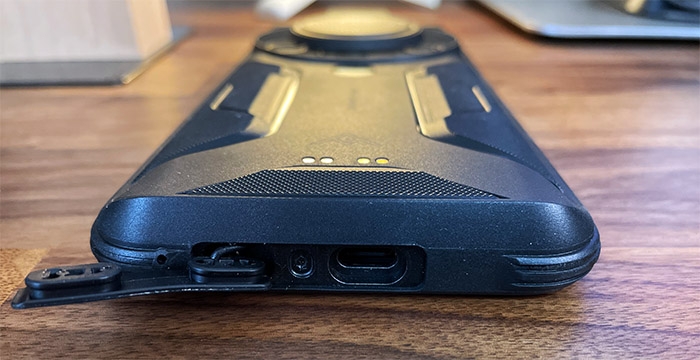

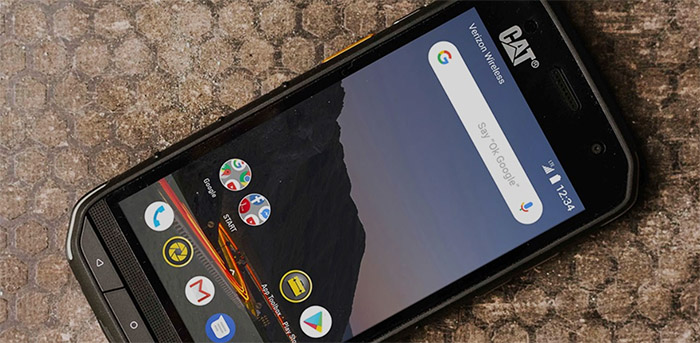
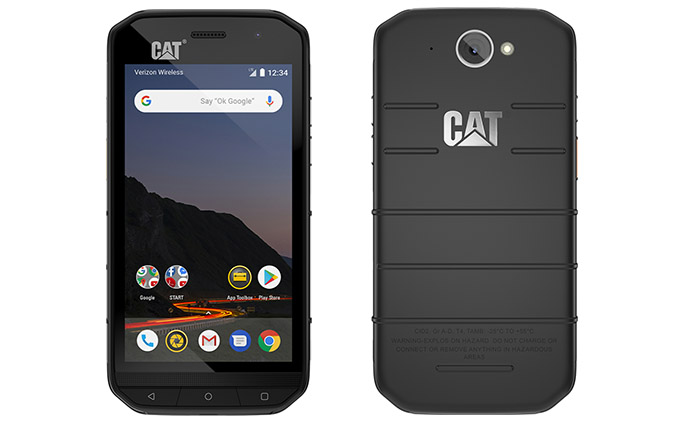
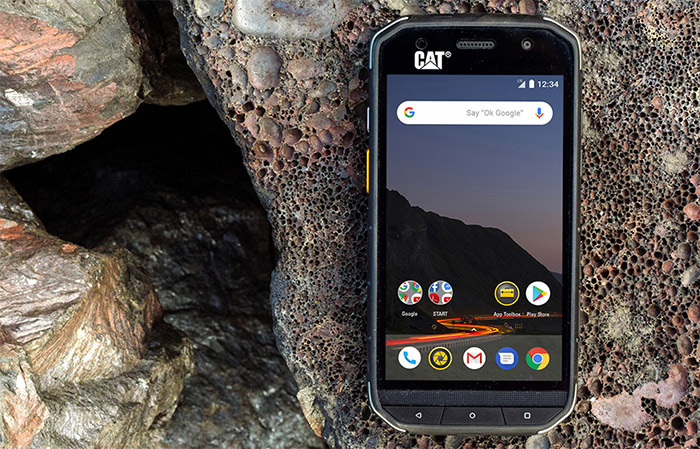
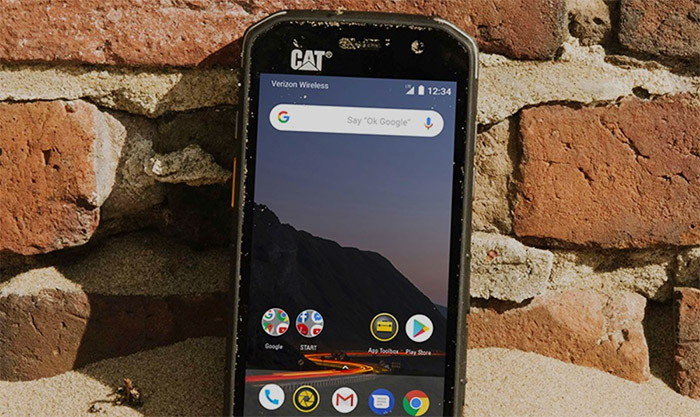
No Oukitel? Ulefone?? Cubot??? Blackview??? Are you sure you are reviewing “rugged” smart phones? Or just popular and expensive brands??
I have a Note 4 with a Powerbear 7500 mah removable battery and a custom built rugged cover, it has survived a 10 foot drop onto a concrete step. Lucky it was was not the screen!. ITs not waterproof. But it has three times optical zoom on the camera. The battery life now rocks, and the battery is replaceable. I have no issues with my apps or everyday use. But I will eventually have to replace it. Right now its a game of seeing how long I can keep it going. At least for another year or two.
I am really interested in the Samsung XCover FieldPro , it be waterproof, drop resistant and removable battery. ( Gotta have extra batteries) when hiking in the woods.I would like the optical zoom feature to be there, but it is probably not a total deal breaker..maybe. I am curious why they would not have that feature in a phone that would be used in rugged environments. Especially with hikers who would like to take good quality pictures of some of the scenic vistas they see when going in the back country. Optical zoom on my note 4 helps me take great pictures.
Right now I am curious about Sonim XP-8 future replacement (an XP-9?) if they will keep building on the good base line of the XP-7 and XP-8. IMHO the The XP8 is best of the bunch due to its toughness and build, removable battery. Wish its camera were better and a headphone jack would be nice for connecting speakers or headphones.
I feel Samsung it trying to catch up to Sonim (and others) market a little bit but feel that they just doing enough to qualify as a rugged phone, but could have easily put in a better camera optical zoom tech [From a note 4!! 😉 ] I also like the FM radio feature in the XP 8. It nice to be able to listen to music when your working on a boring job or working in an shop setting.
I use the optical zoom in my Samsung Galaxy Note 4 phone in an industrial workplace, to zoom in on equipment that I cant get to without a ladder or some lifting device. To take picture of equipment data plates on the side panels of a unit. Saves me the time of getting a ladder to get up into the area to take the picture. I look the picture and with the high res camera I get all the words and information numbers I need. This is something all the rugged phone seem to miss. In industry being able to take good picture of equipment is important and being able to easily email that info by text or email to the other engineering departments is essential.
Cats Infa-Red feature is not necessary. If you need to do those checks on the job. they give you special and more reliable, certified and consistent tools for the day to day eat checks. On equipment or power generating equipment.
I hoping Samsung XCover FieldPro or the future Sonim XP-9 give me a really good reason to upgrade from my Note 4 ( with stylus–great when navigating web pages–I got thick mans hands and fingers) because right now there nothing out there that wants me to up grade.
Have you seen Samsung Xcover Pro? removable battery 4050mAh, IP68, Mil 10 standards. No buttons, quite bit screen estate, looks quite modern yet rugged and comes with 4 years of security updates.. Also has mpos
Hello Mark, Great Article. I am looking for a mobile device suitable for industry work in subzero temperatures and producing longer battery life amidst the cold weather. Please share your suggestions for the Use case ? Thank you
Hello Mark,
A couple questions.
1. Have you considered the Doogoo S60 and the AGM X2?
2. Have you seen the link below on the Moto Shattershield? If it cracks you have to pay to have the screen replaced.
https://forums.lenovo.com/t5/DROID-TURBO-2-by-Motorola/Warning-Regarding-your-Moto-ShatterShield-Screen-that-is-quot/td-p/3309345
3. Have you looked the duration over which the different phone manufacturers provide security updates? It is not any good have a rugged phone exterior and weak/insecure software. A rugged phone should be characterised by a rugged exterior and strong rugged secure software platform. Samsung for example only provides updates for 2 years after the phone is announced, even though you may still purchase the phone 2 years later. Apple and Google problem provide the best security updates for their own phones.
I am currently on my second cat S60 and an not real impressed the first one the speaker quit within a month and while dealing with the return I was trying out the underwater mode and the phone literally filled up with water to the point when i opened the cover for the USB port water ran out of it. Note the second one the side of the case is loose, it feel out of my pocket as I jumped over a puddle running to the car in the rain and needless to say it got wet inside.
Another down side is it only works on AT&T/T-Mobile networks which where I live is not very reliable
That being said I have used the infra red camera several times at work to find problems in a refrigeration system and bad electrical connections that didn’t show up on conventional meters.
This was a very good article.
I
As a Samsung XCover 1 and 2 user I was very happy. I had put them through hell in the mountains and on exercise and they always delivered. A 2hr surf trip saw it reach its limits. I am now on my Activ’ rant. S5 Active. Destroyed a screen with a clumsy 1m drop (yes it had a protector). 2nd one from the same shop did 1 mountain trip before lens cover was damaged (it sticks out, so bad design) and so onto s6. Same issues…. lens cover on rear camera ans screen glass not upto much. The Activ have great features but really THEY ARE NOT RUGGED PHONES for the person spending time in the outdoors. My XCovers were superior, except for photos. sO PLEASE HELP. I am not a saturday sunny outdoor to the pub guy, am not an industrial oil worker but want a serious outdoor phone that will withstand serious adventure and take nice pics. Please help.
If you want a reasonably rugged smartphone that actually looks like a smartphone, there aren’t many options on the market, unfortunately. I see that the Samsung Active series is off the table and, while Motorola Z Force has a tough screen, the camera lens is very fragile (a rugged case may do the trick). You could also have a look at the newly released LG X Venture, but it seems to be a copy of the Galaxy S5 Active (could be better or worse, as I have not yet had the chance of testing it).
IMHO since the Samsung s4 nothing has really changed with smart phones, yeah sure you get a better camera but so what? i’m only going to be taking pictures of my cat for the internet with it 😀 haha
as a self employed welder/fabricator i have put phones to the test. i went thru 15(yes) of my first phones , i cant even remember the name. NOW i have a kyocera Duraforce Pro. it is almost a year old and still going strong. broke two screenprotectors and the original is still working. and the speakers are working fine. the superfine steel magnetic particles get in to the speakers and make them scratchy until going off completely
i didnt finish. anyway the camera(s) yes two of them . are really good, not perfect but really good. but if you want a tough phone, i really like the kyocera Duraforce Pro. in the welding, grinding, sometimes wet environment, it has stood up strong. only two screen protector breaks, original is fine. and the battery last more than one day , even with a camera monitor running in the background . if logged out of the camera system, will last two days, one night
My husband had the Kyocera Brigade and 2-3 months in he dropped it, ironically off the back a military vechile and the screen shattered..
the whole phone started going crazy wouldn’t turn on, wouldn’t stay on if it finally would turn on…
Kyocera has been a bit of a disappointment really. I’ve had both versions, the Brigadier is the newest. Overheating is a big problem. The Brigadier will overheat quite easily. If a phone is going to say “harsh” environment, then it should work in the heat. Swimming in cool waters a couple of feet in depth is not harsh. Neither is shaking when enjoying a bike ride down hill or something similar. “Harsh” means an environment where its going to be hot or extremely cold, or sandy, or suffer through the jarring of a parachute landing. I mean, what does “harsh” mean to you? Kyocera cant stand the heat. Bottom line.
Kyocera claims that the Brigadier is T4-rated, therefore: “No point inside the phone will get hotter than 135°C, as long
as the phone is kept within operating range of -30°C to 60°C”, as quoted from their website (in Fahrenheit, it’s between -4 to 140 degrees). It seems that this is their definition of extreme temperature. Did your phone overheat from the beginning or after a software update? And, did it happen only after exposed to high temperatures? Lastly, have you changed it for something better suited in extreme temperatures?
The phone had a software update right out of the box. I can tell yiu the phone was no hotter than 90 to 95 degrees Fahrenheit. It kept wanting to shut down. Its useless in the heat. Manufacturers will send equipment to us all the time for free because they want us to put them through the harsh environments we operate in. I wish cell phones would be one of those things. I can tell you this, kyocera is a fail in high heat environments.
according to the recent Facebook Post 17% OFF on AGM X1 for 7 days . for the price it is very a good deal. it is one of the top rugged smartphone with stunning look, perfect combination of hardware and software.
The Galaxy S7 Active should not be on this list. I know, because I was unfortunate enough to buy one thinking it was a rugged phone. It is not. Screen cracked within 3 three weeks, with a glass protector on it, with very gentle handling. Not even doing anything “active” or different from any other phone I have had which lasted years. Lots of people petitioning for a class action to replace this. This is a common occurrence along with the camera lens shattering. Over $400 to replace screen (non-insured plan). The screen itself has a plastic coating which will scratch very easily and is non-replaceable.
During the time I had a look at the Galaxy S7 Active, it did not strike me as fragile and the screen did not shatter but, since many more people have said the same thing as you did (broken camera lens and fragile display), it seems that I may have been among the lucky ones. So, since the phone is not up to the standards of the other rugged smartphones on this list, I have moved it to Honorable Mentions (and will remove it completely if Samsung doesn’t recognize it as a manufacturing defect).
The AGM X1 should hold a place in the best rugged phone
Pretty sure it isn’t comparable with US LTE towers.
Great Article
Thank you very much!
Wow, this is a great article! Deciding which rugged phone to use can be difficult. I also found this rugged smartphone guide helpful: https://www.scandit.com/resources/rugged-smartphone-purchasing-guide/
hey great article thnx for sharing it. I also fount some more rugged smartphones, i hope you also like them.